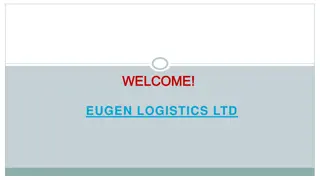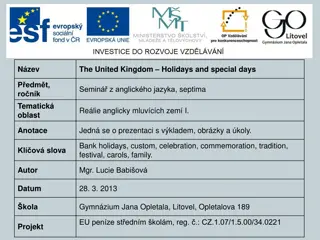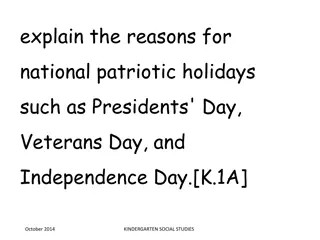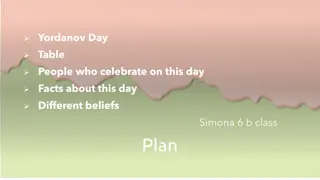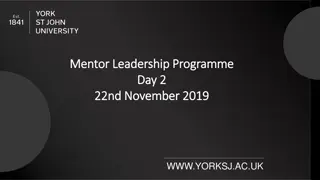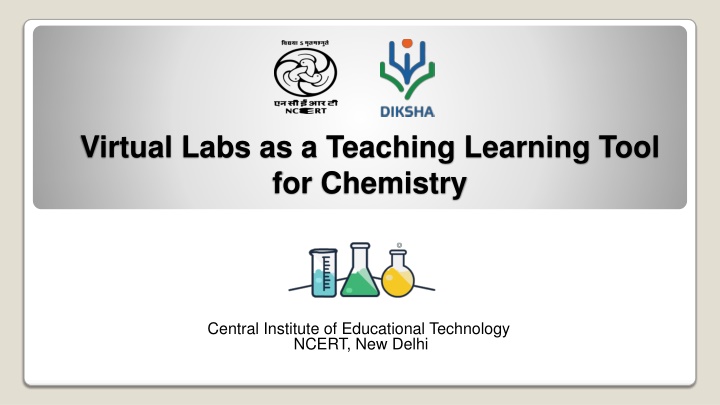
Enhancing Chemistry Learning with Virtual Labs
Discover how Virtual Labs revolutionize chemistry education by providing hands-on experiment-based learning experiences, promoting safety in experimentation, and integrating pedagogical strategies for a comprehensive learning approach. Explore key features, policy perspectives, and recommendations from the National Education Policy 2020 to bridge the digital divide and ensure equitable technology integration in education.
Uploaded on | 0 Views
Download Presentation

Please find below an Image/Link to download the presentation.
The content on the website is provided AS IS for your information and personal use only. It may not be sold, licensed, or shared on other websites without obtaining consent from the author. If you encounter any issues during the download, it is possible that the publisher has removed the file from their server.
You are allowed to download the files provided on this website for personal or commercial use, subject to the condition that they are used lawfully. All files are the property of their respective owners.
The content on the website is provided AS IS for your information and personal use only. It may not be sold, licensed, or shared on other websites without obtaining consent from the author.
E N D
Presentation Transcript
Virtual Labs as a Teaching Learning Tool for Chemistry Central Institute of Educational Technology NCERT, New Delhi NCERT, New Delhi Central Institute of Educational Technology
Policy Perspective (NEP 2020 vision) Technology use and Integration Ensuring Equitable use of Technology Extensive Use of technology in teaching and learning Content Creation, Digital Repository and Dissemination Blended mode of learning Addressing digital divide
Recommendation of NEP 2020 Access to quality practical and hands-on experiment-based learning experiences to each student Virtual labs enhance actual laboratory experience Lab based e-resources help students in visualizing the concepts
Virtual Laboratory (Virtual Labs) Simulation Accessibility Scalability
Key features of Virtual Labs Integrated blended learning (content at one place) On-demands Labs (learn and perform at your own pace and time) Demonstrate experiment through simulations/animation/ videos tutorials (better insights) Self evaluation (pre/post lab quiz) Virtual Laboratory Freedom to repeat experiment (understanding of abstract concepts) Freedom to make mistake (can experiemnt with experiemnts)
Pedagogical Integration of Virtual lab Pre-Lab Preparation Teachers introduce key concepts and lab objectives through resources like videos, assignments, or lectures, ensuring students understand the lab setup Hands-On Lab Engagement Teachers guide students through the experiment on the virtual platform, supporting data collection and observations in physical lab experience Post-Lab Reflection Teachers help students analyze their data, draw conclusions, and compare results with theoretical and practical expectations, reinforcing their learning
Empowering Chemistry via Virtual Labs Safety in Experimentation: Virtual labs allow students to safely conduct and observe explosive reactions and high-temperature processes, without any risk. Visualizing Dangerous Chemicals: Virtual labs can simulate the use of dangerous chemicals like concentrated acids or reactive metals.
Contd. Unlimited Resources: Experiments can be run multiple times without wasting materials or incurring extra costs. Consistency and Precision: Temperature, pressure, and volume can be controlled with precision, which allows for more accurate experiments and results. Replication of Experiments: Students can replicate their experiments as often as needed, giving them the chance to learn from mistakes and improve their techniques.
Contd. Pre-Lab Simulations: This helps reduce mistakes in the physical lab and makes students more confident when handling real chemicals and equipment. Reinforcing Real Lab Skills: While virtual labs offer a different environment, they can still teach foundational lab skills such as data collection, graphing results, identifying experimental errors, and analyzing outcomes. This makes them complementary to hands-on lab experiences.
Contd. Chemical Reaction Simulations: Students can visualize chemical reactions at the molecular level, observing how atoms and molecules interact, bond, and change.
Contd. Visualization of Atomic and Subatomic Particles: Virtual labs provide dynamic simulations that show electrons orbiting nuclei, atoms forming bonds, or molecular vibrations, making abstract ideas more concrete. Macroscopic vs. Microscopic View: Virtual labs help bridge the gap between macroscopic observations (e.g., color change in a reaction) and microscopic processes (e.g., electron transfers or molecular collisions) by allowing students to switch between different levels of observation.
Contd. Instant Feedback on Mistakes: For instance, if students incorrectly measure chemicals or miscalculate concentrations, the virtual lab may alert them or provide suggestions for improvement. Step-by-Step Guidance:. This is especially useful for novice learners who are unfamiliar with laboratory protocols.
Steps to access the Virtual Lab on the DIKSHA portal URL: http://diksha.gov.in/
Virtual Labs in DIKSHA Step 1: Search https://diksha.gov.in/ Step 2: Scroll banners to find Virtual Labs vertical and click on its Explore icon. Step 3: Scroll down on the landing page of Virtual labs to reach eContent of class 7. Step 4: Click on the Explore icon of the class 8 , select the English medium, then choose a Science as subject. Step 5: Click on the Explanation resource to reach the link for related resources
Scroll banners to find Virtual labs vertical and click on its Explore icon
Scroll down on the landing page of Virtual labs to reach eContent of classes 6-12
Click on the Explore icon of the desirable class, select the medium of interaction, then choose a subject Science
Chemistry Virtual Lab on DIKSHA Class VIII
Basic Laboartory Techniques Filtration technique Measuring volume Pouring Measuring Filtering Making standard solutions Preparing reagents Use of a gas burner Handling of laboratory glassware Making a solution of known concentration
Chemistry Virtual Lab on DIKSHA Class XI
Chemistry Virtual Lab on DIKSHA Class XI
Chemistry Virtual Lab on DIKSHA Class X
Acids, Bases and Salts as Electrolytes Acid, bases and salts dissociate in water ions conduct electricity HCl NaOH NaCl
Chemistry Virtual Lab on DIKSHA Class X






